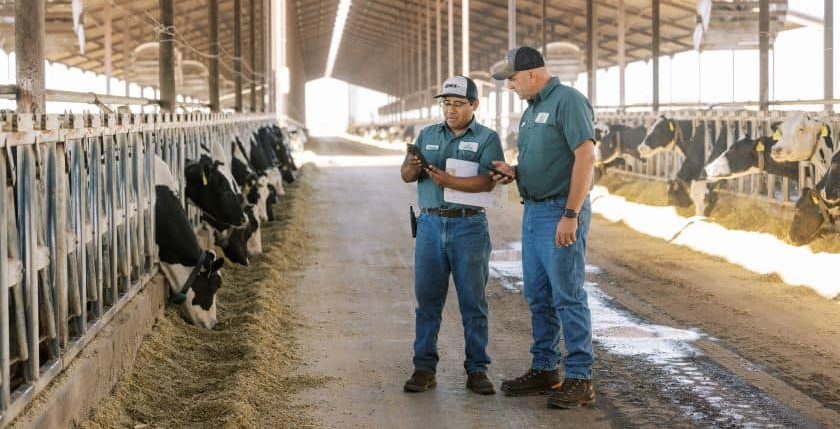Without feed, there’s no milk—every dairy farmer knows that. But achieving higher milk production involves more than just providing feed. By optimizing not only the feed itself but also the feeding patterns, you can significantly boost milk yield.
As with any optimization, it starts with observation and analysis. If you’ve already invested in an automated behavior monitoring system, like the GENEX HerdMonitor™ cow monitoring system, it offers more than just alerts for heat and health. It also provides opportunities for deeper analysis, such as examining feeding patterns. Essentially, you can extract more insights from the same data!
Why should I optimize herd eating patterns?
Consistent feed intake is crucial for good milk production. Cows need a constant supply of energy to produce milk and the pH in the rumen must remain within a stable range for proper digestion . Additionally, cows are creatures of habit and thrive on regular routines, which reduces stress. By ensuring that cows eat regularly and sufficiently, you optimize milk production, along with the health and well-being of the animals.
What information will I see in the HerdMonitor™ system?
The feeding pattern of all cows in a group is combined and displayed in a graph as a percentage of cows eating simultaneously (Figure 1). On this timeline, you can see the feeding pattern from the past 24 hours as a sharp dark blue line, with the pattern from the past 10 days shown as a light blue shadow behind it. At a glance, you can tell whether the daily intake pattern is consistent (narrow range) or if it shifts slightly each day or time (wider bandwidth). Peaks indicate when many cows are eating at once, such as when fresh feed is provided or when feed is pushed up.
In this example, the graph shows that cows are milked three times a day (indicated by the orange dots). At that time you see a drop in intake because the cows are in the parlor, but also a quick return back to feed afterwards. It also shows that cows don’t eat between 7 a.m. and 9 a.m. This could mean that feed may not be available or accessible to the cows. Additionally, the shift in the circled high peak at the end of the timeline shows that yesterday, the cows were fed an hour later (sharp blue line) than on previous days (light blue shadow). With the historic data available in the HerdMonitor™ system interface it’s also possible to view trends over a longer period, allowing you to identify changes in the feed or seasonal variations.
What can I do with this information?
This information allows you to adjust your farm’s protocols and monitor compliance:
- Are my feeding and milking times consistent every day?
- How often is the feed pushed up?
- Is fresh feed always available and accessible to the cows?
You can also detect abnormalities:
- Is there something wrong with the feed?
- Are the cows eating less due to heat stress or a change in the feed?
Cows are creatures of habit and prefer to eat at regular times. Because of the hierarchy within the group, not all cows may eat at the same time. The dominant cows may eat first when fresh feed is provided. Therefore, feed should always be available so all cows have sufficient access. If at any point no cows are eating, it’s a clear sign that no feed is available, which you want to avoid.
And if you have or advise on multiple locations, it is also possible to compare the eating patterns. These eating patterns can differ significantly. For instance, locations with milking robots have a different, more even herd eating pattern than locations with fixed milking times. The latter show more peaks and troughs in the percentage of cows eating at the same time. Insight into peak times can be used to evaluate the design of the barn and the amount of bunk space required for a pen and, where possible, adjust feed management accordingly.
I don’t have time for this – when should I do it?
Of course, attention lists and work lists remain your most practical tools for daily tasks. However, for dairy farmers looking to further improve milk production, The analytical tools available in the GENEX HerdMonitor™ system powered by Nedap provide the opportunity to fine-tune your operation. You don’t need to do this daily; instead, you can schedule it at regular intervals weekly or monthly, thanks to the historic data in the interface.

Want to learn more about your herd's eating patterns?
Are you looking for ways to improve milk production? Dive into the analytical tools of the HerdMonitor™ system. Ask your GENEX representative for more information, or click here to learn more about the capabilities of the cow monitoring system.


